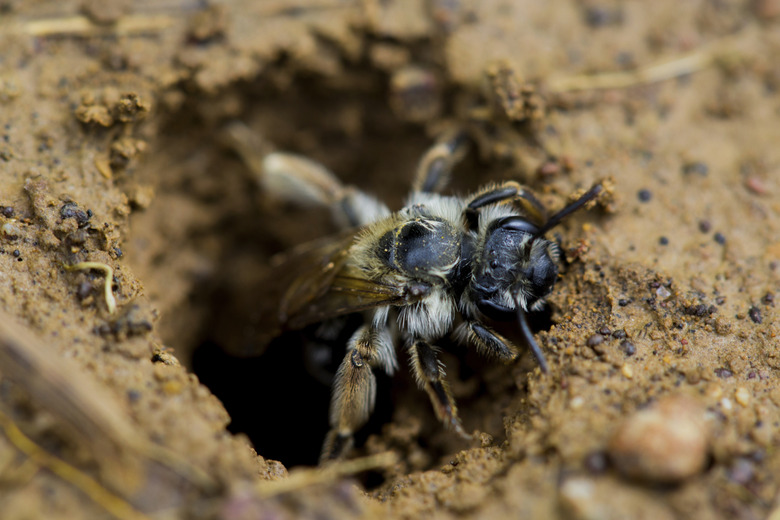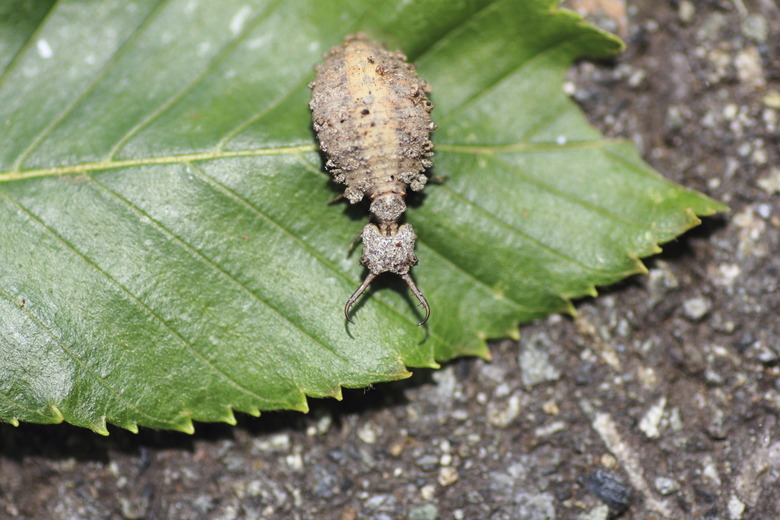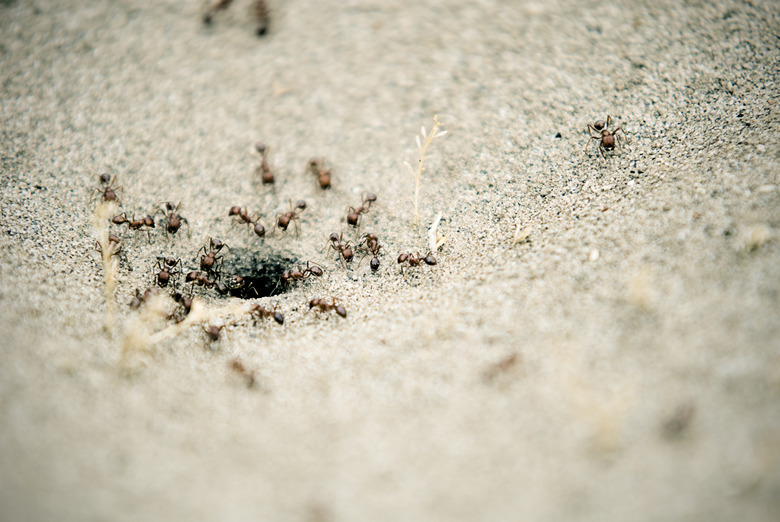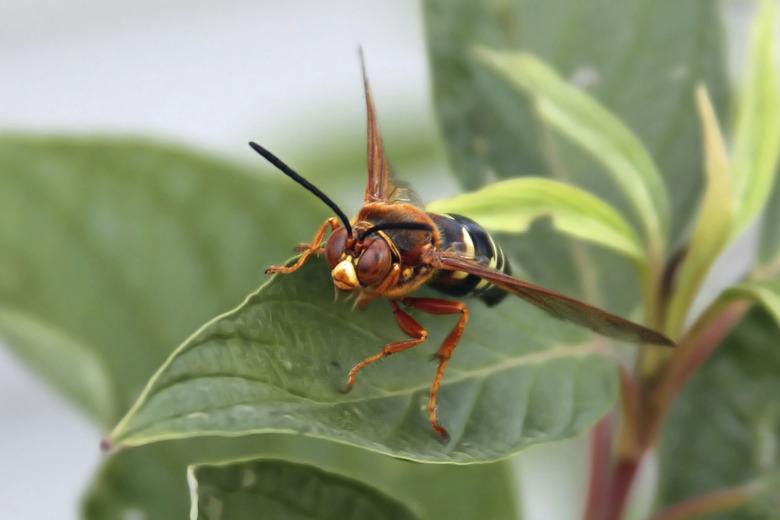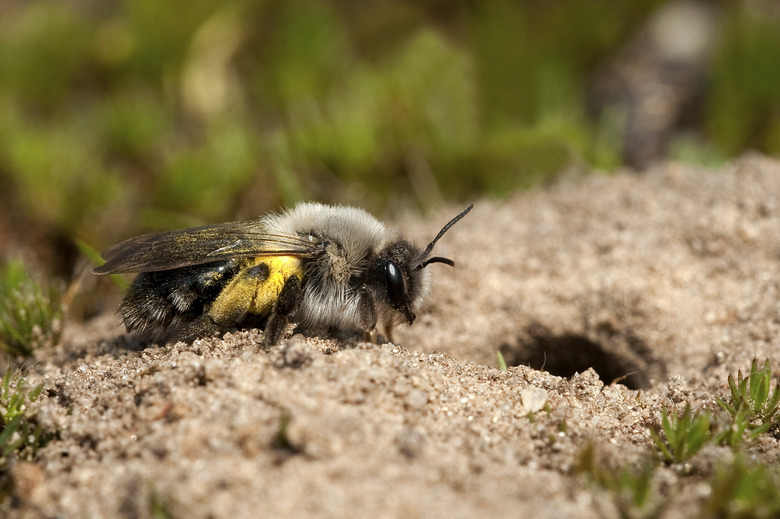Insects Found In Sandy Landscapes
Sandy areas present a harsher environment to insects and plants than nearby areas with garden soil. The sandy area is drier, because sand doesn't retain much water. It shifts and is often unstable.
Sandy areas present a harsher environment to insects and plants than nearby areas with garden soil. The sandy area is drier, because sand doesn't retain much water. It shifts and is often unstable. Sand doesn't support as much plant life, so it's hotter in the day and cooler in the night without a shielding layer of vegetation. But many insects find this microcosm a favorable habitat. You can see them better because of the open nature of the ground.
Fierce Hunters
Two kinds of mighty predators lurk beneath the surface of sandy soil. One, the ant lion, digs a funnel-shaped pit and the other, a tiger beetle larva, makes a tunnel. The ant lion is the larva of a gray, gauzy-winged nocturnal insect called the owlfly. The ant lion poises its forcepslike jaws at the base of the funnel. As an ant falls into the trap, the ant lion tosses sand over it and pierces the ant with its jaws when the ant slides to the bottom. The grublike tiger beetle larva lurks at the mouth of its tunnel, lying in wait for passing insect prey. The large sickle-shaped jaws quickly grab the prey and drag it into the burrow. Adult tiger beetles are also predators, active during daytime. This beneficial insect eats garden pests, including grasshoppers, flies, caterpillars and ants.
- Sandy areas present a harsher environment to insects and plants than nearby areas with garden soil.
- The grublike tiger beetle larva lurks at the mouth of its tunnel, lying in wait for passing insect prey.
Colony-Builders
Many species of ants find sandy soil ideal for constructing their nests. Scientists studying the insects of the Ohoopee Dunes in Georgia found 72 species of ants that nested in the sandy area. Fortunately, two of the nastiest kinds of ants, imported fire ant and Southern fire ant, don't prefer arid areas such as sand for their nests. They live in well-watered gardens, and imported fire ants need a daily water supply. Because ants can sting or bite or do both, depending on the species of ant, hopefully your sandy area is where ants won't forage for your food and where pets and children won't pass by their nest frequently. Encourage predators that feed on ants, including ant lions and horned lizards.
Industrious Wasps
You might see a number of 1-inch-long yellow and black or white and black sand wasps digging short burrows in the sand and tending their young. They catch and kill flies for their larvae, often on the wing, including deer flies and houseflies. Each larva rids your yard of about 24 flies. These busy insects are so focused on their job they rarely ever sting humans. A much larger wasp, the cicada-killer can reach more than 1 1/2 inches long. After digging a burrow that can be several feet long, the female wasp catches and paralyzes a cicada for its larva, laying a single egg that hatches into a grub that devours the still-living cicada. The cicada-killer isn't an aggressive wasp, but its size can be alarming.
- Many species of ants find sandy soil ideal for constructing their nests.
- The cicada-killer isn't an aggressive wasp, but its size can be alarming.
Burrowing Bees
Some wild native solitary bees make their nest burrows in sandy soil. These beneficial bees are effective pollinators and are not harmful to people. Digger bees have long tongues and are good pollinators of crops. Other bees pollinate only a few types of plants or flowers. Although they're not social bees, a number of females will often make burrows in the same area. The bees provide their young with pollen and nectar.
References
- Texas A&M University Aggie Horticulture: Galveston County Master Gardeners: Beneficials in the Garden: Tiger Beetles
- Mississippi State University: Mississippi Entomological Museum: Ants (Formicidae) of the Southeastern United States: Ants of Ohoopee Dunes, Emanuel County, Georgia
- University of California Statewide Integrated Pest Management Program: Southern Fire Ant
- Missouri Department of Conservation Online: Sand Wasps
- Attracting Native Pollinators: The Xerces Society Guide to Conserving North American Bees and Butterflies and Their Habitat: The Xerces Society
